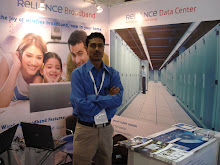Rising advertising cost coupled with the desire for direct customer interaction has spurred a gradual increase in ad spends for below-the-line (BTL) promotional activities. Many companies have found a new flavour in this medium, as it provides immediate brand visibility at affordable prices.
BTL advertising is non-media advertising, particularly sales promotions, reduced price offers and interactive sponsorship activities which are more personalised. “This industry has jumped from Rs 300-400 crore, a few years back, to as high as Rs 1,000 crore today.
Budgets for BTL ad spending have grown phenomenally. What was probably 20:80 in favour of above-the-line (ATL) advertising earlier could be 40:60 now,” said Raj Hansoge, MD, Buenos Entertainment, a marketing support company that does BTL campaigns.
Conventionally undertaken at consumer touch points such as retail outlets and coffee shops, companies have begun setting up kiosks in cafeterias at tech parks, enabling them to reach nearly 20,000 potential customers everyday.
BTL promotions are product and brand driven. Brands are courting this medium to promote product attributes without the burden of ad clutter. Once Allen Solly, a brand of Madura Garments, moved into the retail format, BTL advertising became a necessary alternative to drive traffic to their stores.
The company also used direct communication through the SMS format to promote the brand within their catchment area. “Below-the-line retail activation is useful in tracking actual conversion rates.
In the future while our ad spending on traditional mediums will continue, BTL is bound to grow at least 30%,” said Allen Solly brand marketing manager Kapil Khattar.
The ability to customise promotions to suit different markets and obtain immediate feedback has boosted the medium’s popularity. Wireless internet provider Tata Indicom also opted for BTL techniques when they re-positioned their brand. With their ‘plug 2 surf’ campaign, the company found the need to touch base with consumers.
“A television ad just gives us 30-40 seconds to promote a new tariff card while BTL enables a dialogue engagement with consumers,” said Tata Indicom marketing head Abdul Khan.
ATL techniques aren’t cost effective to communicate with a small target group. Dutch food retail chain Spar also digs into their ad spends to finance ground-level promotions within their development area.
“We are currently operational only over a limited geography and ATL ad spending, which involves a lot of wastage, will not ensure substantial footfalls,” said Max Hypermarkets India MD Viney Singh. Being new on the retail front, the chain spends up to 3-4% of revenues on advertising. BTL advertising already accounts for a half of this.
Industry observers feel that the division between BTL and ATL advertising is blurring quickly. “The future will see a great sense of accountability with regard to market expenditure to determine what the real benefits are to the company, so advertising is bound to be interactive,” said Mr Khan.
While BTL advertising is only slated to grow with greater vigour in the future, companies are not in a hurry to completely switch over either.
Friday, October 10, 2008
Subscribe to:
Post Comments (Atom)


No comments:
Post a Comment